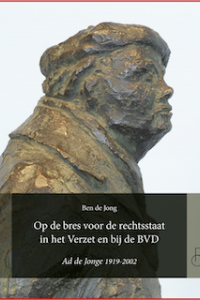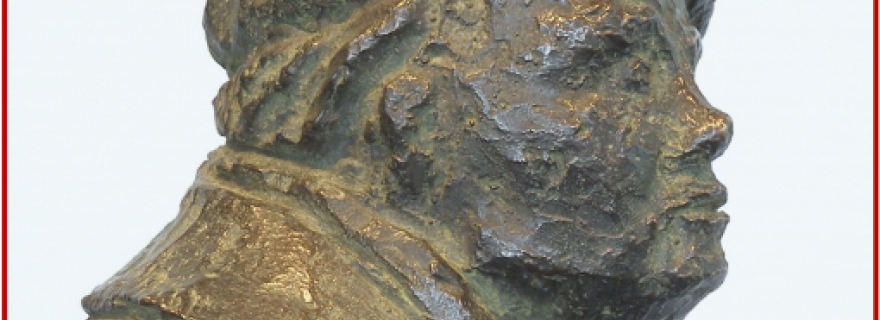The life and times of a BVD official: Ad de Jonge 1919-2002
Based on: Op de bres voor de rechtsstaat in het Verzet en bij de BVD. Ad de Jonge 1919-2002. Amsterdam: Panchaud (2020). 551 pages. To be published on 02 December 2020. [In defense of democracy: in the Resistance and with the security service BVD. Ad de Jonge 1919-2002.].


This book is part memoir, part biography and an addition to the historiography of Dutch intelligence and security services. The description below draws from it. Ad de Jonge was an important figure in the Cold War history of the Dutch security service Binnenlandse Veiligheidsdienst (BVD) where he worked in 1952-1979. The book is based to a large extent on wide-ranging interviews with him that took place in 1997-2001. Substantial archive material and interviews with former colleagues were also used by the author. Extensive comments were added that clarify statements by Ad de Jonge.
As a young student in The Netherlands at the beginning of the war, Ad de Jonge got involved in the resistance against the Nazi occupation practically right from the beginning. He was arrested at his mother’s house in The Hague in March 1941 and spent the remainder of the war in a series of German prisons and concentration camps, Natzweiler in the Alsace in present-day France among them. The German surrender in May 1945 came just in time for him. For a while after the end of the war, he worked at the secretariat of the Dutch Labor Party PvdA in Amsterdam. In early 1952, Ad de Jonge went to work with the BVD in The Hague where he would spend the rest of his career. He rose to become the head of Department B which primarily targeted the Dutch communist party CPN and its satellite organizations.
Ad de Jonge was a typical example of many in the first generation of BVD officers after the war, who had taken part in resistance activities during the occupation. They did this, of course, at great personal risk. For them the fight against communism during the Cold War was a continuation of their earlier activities. Several of those who took part in resistance activities, Ad de Jonge among them, rose to prominent positions in the BVD during the Cold War.
Through the book, Ad de Jonge describes in detail his experiences in Nazi imprisonment during the war and his career with the BVD. He offers his views on important personalities from the history of the service, among them its colorful first head, Louis Einthoven. The service Einthoven built from the ground after the war was based on his plans and vision. He also had an abrasive personality, however, and picked quarrels with many inside and outside the Dutch government. It fell to his much more diplomatic successor Koos Sinninghe Damsté to repair those relations again. Similar observations can be found in the recently published Spionkoppen by Paul Abels which contains elaborate profiles of the heads of the Dutch service.
Ad de Jonge explains how the BVD recruited and ran agents inside the Dutch communist party and other organizations and how the service thwarted operations on Dutch territory of the KGB and the renowned East German intelligence service Hauptverwaltung A (HV A). He also offers many insights in the way the BVD targeted individuals and organizations that were deemed a danger to the security of the country. The service not only recruited agents, but also tapped phones and secretly placed microphones in certain premises if needed. Even though the BVD had the authority to do all of these things, there were clearly limits to what the service could do, not just in legal terms but also with an eye on the political repercussions bad publicity could have if an operation failed and became publicly known. This fear of negative attention in politics and the media was a constant factor in the operational decisions made by the leadership of the BVD. As becomes abundantly clear from the book, the service was definitely not the all-powerful agency it is sometimes thought to be by outsiders, which is the way it should be in a democracy.
The book will be published on December 2nd 2020 and can be ordered at www.panchaud.nl .


